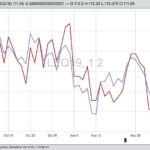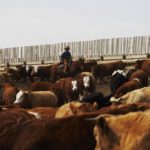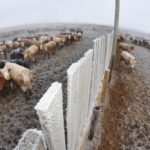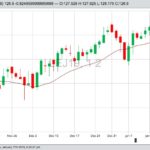Western Canadian feeder cattle markets were quite variable from seven days earlier. Prices were unchanged in the eastern Prairie regions; however, Alberta markets traded $3 to as much as $7 below week-ago levels. Alberta and Saskatchewan feedlot inventories are running 16 per cent above year-ago levels, so there’s limited buying power available. Calves are fleshier […] Read more

Klassen: Feeder market searching for direction

Klassen: Feeder cattle market stabilizes
Western Canadian feeder cattle markets were unchanged from week-ago levels. Favourable weather conditions enhanced buying interest from cattle feeders in Feedlot Alley; however, cattle-on-feed inventories in Alberta and Saskatchewan are running 16 per cent above year-ago levels. Pen space remains at a premium due to limited capacity. County permit fees and added regulations have also […] Read more

Klassen: Softer demand causes feeder prices to weaken
Compared to last week, Alberta feeder cattle markets traded $4 to as much as $8 lower; however, Manitoba and Saskatchewan prices experienced a week-over-week decline of $3 to $5 on average. Demand from Eastern Canada appeared to limit slippage in the eastern Prairie regions but some of these markets also faltered late in the week. […] Read more

Time to buy cattle price insurance
Market Update: Cow-calf producers should sell their feeders with the lofty futures and historically strong basis
Alberta packers were buying fed cattle in the range of $151 to $153 on a live basis in mid-October, up approximately $10 from a month earlier. While Alberta prices have been percolating higher, fed cattle values in Kansas have hovered around US$111 on a live basis over the past four weeks. Market-ready supplies of fed […] Read more

Klassen: Weather weighs on feeder cattle
Compared to last week, western Canadian feeder cattle markets traded $3 to as much as $6 lower. Eastern Prairie regions experienced demand from Ontario and Quebec, which limited the downside; however, Alberta markets faltered as buyers, having factored in a higher deathloss due to adverse weather. Light wet snow along with warmer temperatures during the […] Read more

Klassen: Feeder cattle demand softens
Compared to last week, Western Canadian yearling prices were $2 to $3 lower on average. Feedlots were more aggressive on replacements that will finish for the March April fed cattle market. April live cattle futures continue to trade at a $8 premium to the June contract so lighter yearlings were discounted accordingly. The quality was […] Read more

Klassen: Feeder cattle demand softens
Compared to last week, Western Canadian feeder cattle markets traded $2 to as much as $5 lower. Feedlot margins have come under pressure over the past week which resulted in lower bids for all weight categories. Alberta and Saskatchewan feedlot inventories are running 18 to 20 per cent above year-ago levels. Pen space is at […] Read more

Klassen: Feeder cattle market volatility continues
Compared to last week, Western Canadian yearlings sold $4 to $6 lower while calves were extremely variable dropping $4 to as much as $10 in some cases. Many auction barns held feature sales last week and larger supplies weighed on the market. Weakness in the deferred live cattle futures also contributed to the softer tone. Feeder […] Read more

Price opportunity for calves and yearlings
Market Update: Strong consumer demand is using up beef supplies
The market outlook for fed and feeder cattle is looking brighter compared to a month ago. Beef demand is coming in larger than anticipated due to the corporate and personal tax cuts south of the border. Recent U.S. data shows that restaurant spending was up nearly 10 per cent over year-ago levels during the summer […] Read more

Klassen: Stronger demand supports feeder market
Western Canadian feeder cattle markets jumped $2-$5 last week, after adverse weather caused buyers to shy away earlier in October. Major feedlot operators were very aggressive on quality yearling packages and heavier weaned vaccinated calves. Many operations have limited ownership at this time of year because wet, cold weather conditions delayed purchases. The market appeared […] Read more


